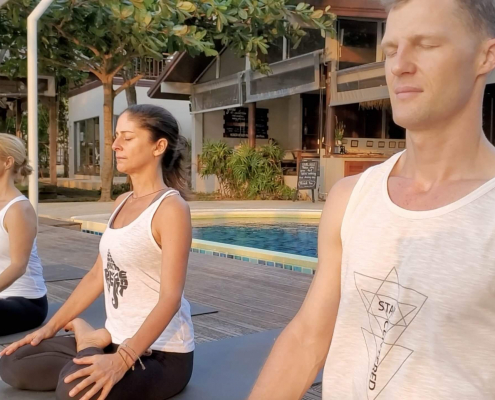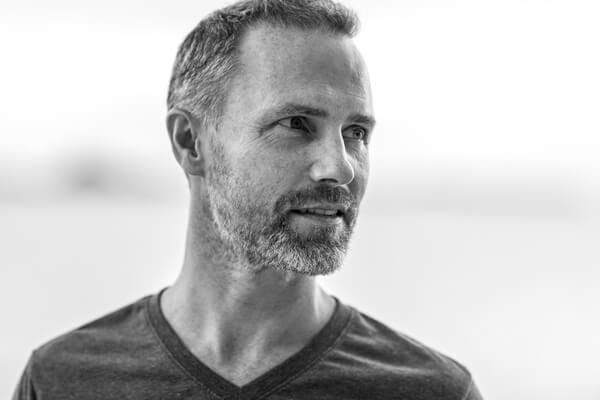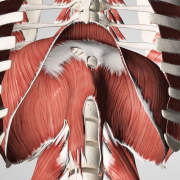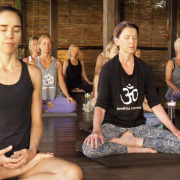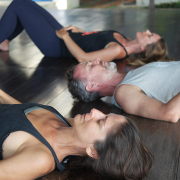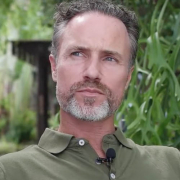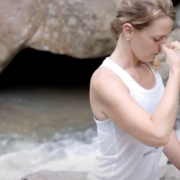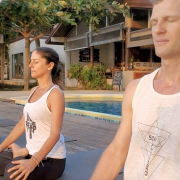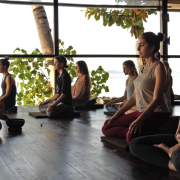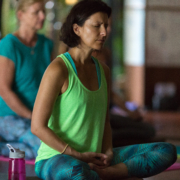 https://samahitaretreat.com/wp-content/uploads/2023/11/IMG_6969-scaled.jpg
1707
2560
Kirsten Mia
http://samahitaretreat.com/wp-content/uploads/2024/01/samahita-logo-v2.svg
Kirsten Mia2023-11-08 18:27:412023-11-08 18:27:41Biohacking – Optimize your Wellbeing.
https://samahitaretreat.com/wp-content/uploads/2023/11/IMG_6969-scaled.jpg
1707
2560
Kirsten Mia
http://samahitaretreat.com/wp-content/uploads/2024/01/samahita-logo-v2.svg
Kirsten Mia2023-11-08 18:27:412023-11-08 18:27:41Biohacking – Optimize your Wellbeing.The Power in Yoga’s Approach to Upgraded Breathing
PART FOUR: The Power in Yoga’s Approach to Upgraded Breathing
Yoga, Breath and COVID-19: lifestyle behavioral support mechanisms. Approaches to manage the physical and psychological burden of stress from living through and after the current global pandemic
” Comprehensive yoga’s approach to breathing involves training of respiration in bodily positions that open up the lungs so the same breath is more efficiently employed across lung function. More importantly correctly trained and practiced breathing exercises emphasize the length, force and pressure of each exhale done repeatedly and continuously on each round of breath. “
- Exhalation power and lengthWhile there is an absence of a specific anti-viral cure the goal of treatment for patients suffering from COVID-19 symptoms should be an intensive maintenance of organ function that can result in lower mortality, according to a recent clinical review by Xie et al. regarding treatment of the disease (1). As a focus of treatment under this acute condition the authors suggest to supplement or replace lung function with methods such as a refined Positive End Expiratory Pressure (PEEP) that delivers an extra pressure at the end of each exhale to keep the lung vesicles open, or the administration of humidified transnasal high-flow oxygen via a tube in the nose. Comprehensive yoga’s approach to breathing involves training of respiration in bodily positions that open up the lungs so the same breath is more efficiently employed across lung function. More importantly correctly trained and practiced breathing exercises emphasize the length, force and pressure of each exhale done repeatedly and continuously on each round of breath. As previously noted other than the application of prone breathing in Part 3 of this article series, yoga’s breathing exercises are not to be applied in such acute conditions but rather serve as preventive in the long run, potentially supportive when symptoms are mild, and developmental over the long term of a robust and healthy lung and respiratory muscle function. When learned and practiced regularly they also serve as a no cost individual practice approach to support lung function. The reference to prolonged extra pressure exhalation can be found in Sanskrit texts relating to comprehensive yoga over the past 2,500 years, where it was combined with utterance of mantras on one exhale, by the 3rd century CE as a specific recommended method to calm the mind and stabilize the nervous system, and as integral in the performance of Hatha yoga breath techniques described in the past 700 years. More recent scientific research has identified pulmonary lung function as a predictor of coronary heart disease (CHD) whereby predicted forced expiratory volume was significantly inversely related to CHD (2). Additionally, the Framingham study employed their risk score algorithm that validated forced vital capacity as a measure of lung function to reveal additive predictive value over CHD for all-cause mortality (3). COVID-19 has been shown to more severely affect elderly and those with other comorbidities, particularly with respect to cardiac and lung function. Jones et al. recently showed that a slow respiratory muscle training was effective in reducing resting Blood Pressure in the elderly subjects while the inspiratory muscle strength and lung capacity were also increased. The nature and value of exhalation should be explored more in terms of well-being, lung function, and a low to no cost overall health measure.
- Proper Breathing is Nasal BreathingNasal breathing is a product of and a contributor to Homo sapiens evolved neck and facial structure and our ability to speak. In contrast to our closest related non-human primate species the human airway is elongated with a poorly supported oropharynx, the foramen magnum is more anteriorly positioned, the maxillo-mandibular complex is regressed to allow for adequate speech, a smaller mouth with an average of 32 teeth as opposed to up to 44 in a chimpanzee, and, in response to these skeletal changes, a retreat of the tongue giving it an obstructive presence in the upper airway. Studies in children reveal poor orofacial development due to predominant mouth breathing, especially in the first two years of life (4). Both normal and healthy breathing and specific breathing exercises require nasal breathing. The nose does perform certain anatomical functions in terms of air filtration, temperature control, and humidity adjustment of the air upon inhalation. Chronic mouth breathing has been shown to underventilate the nose which may lead to an increase in inflammation in the nasal mucosa, an unwelcome feature at any time and especially during a potential COVID-19 infection. Mouth breathing also leads to sleep-disordered breathing. If one breathes through the mouth in waking hours then it is unlikely regulated nasal breathing occurs when asleep. This may lead to issues with obstructive sleep apnea, poorer quality sleep, and thus lower stress resilience (5). A nasal breath also allows the diaphragm to descend more deeply and thereby increase lung function and ventilation. Each nasal breath circulates air in the different sinuses, sites of nitric oxide production as well as stimulation of these hollow cavities in the skull whereby the sphenoid and ethmoid, paranasal sinuses, are anatomically closest to the hypohysial cavity where the pituitary gland sits, an event bypassed when mouth breathing. The opportunity to regulate and elongate the breath occurs through the nose resulting in a calmer state and even a potential whole brain stimulation that possibly modulates behavior and the state of consciousness (6). Recent research on humans revealed that nasal breathing entrained local field potential activity in the piriform cortex, hippocampus, and amygdala and diminished when respiration was diverted to the mouth (7).Read: What is Pranayama, yogic use of the breath to reveal no breath
” Better trained respiratory muscles, for example via breathing exercises as part of a regular comprehensive yoga practice, subsequently augment plastic adaptation of the respiratory system, improve heart and lung function, potentially aid enteric function through pressure from improved diaphragm movement, “
- The NO value of Hummm Breathing (aka Bee Breath)The practice of repeating the monosyllabic sound of Om on one exhalation is noted in ancient texts over 2,000 years ago. In addition to the prolonged exhalation value as noted in point 7 it introduces a vibration due to the sound of Om across the pharynx, nasal, and sinus regions. A later developed Hatha yoga practice, documented 700 years ago but most likely practiced longer than that, imitates the sound of the black bee which lends it its name in Sanskrit, bhramari. This is also a humming type of breath but more isolated to the region of the soft palate in the naso-pharyngeal space. The former reference of Om places it in the context of psychological well-being to focus and clear the mind resulting in a calm, peaceful state. The latter reference of bhramari extends beyond this psychological value to a physiological benefit in terms of health. Recent discoveries involving the molecule nitric oxide (NO) confirm its valuable health-promoting effects in terms of blood pressure regulation to antimicrobial defense (8) and that the isolated practice of humming on exhalation can increase nasal NO levels 15-fold compared to quiet exhalation (9). As a dedicated breathing exercise inserted into a routine (see Breathwork for Anxiety and Other Difficulties ) it offers the advantages of regulated breathwork and the added health benefits of increased nitric oxide production in the nasal and sinus regions.
- Respiratory System Plasticity and its Anatomical and Functional InfluenceRespiratory neuroplasticity is characterized by previous experience long-lasting expressions and is now considered an intrinsic feature of the respiratory control network that extends into adult life (10). This is a sword that cuts both ways as it could either exacerbate maladaptive responses to poor and obstructed respiratory functioning or it could confer greater advantages when breathing is trained enhancing respiratory plasticity. The respiratory apparatus functions as a pump in a closely interrelated role with the cardiovascular system so together they eliminate CO2 and metabolites from cells while deliver oxygen and nutrients to those same cells. The central respiratory control has been shown to couple with sympathetic activity, and when particularly maladaptive due to poor respiration, can influence the development of hypertension (11). Breathing exercises are consciously controlled respiratory events, trained in a graded manner over time, to influence the function of the respiratory diaphragm, intercostal muscles, and as a result pulmonary function and health. Each ebb and flow of inspiration and expiration expand and contract the lungs and by default impact the heart. Additionally, the movement of the diaphragm with varied intercostal activity depending on the depth of the inhalation alternates intrathoracic and intraabdominal pressure providing a massage stimulation to the visceral organs. This mechanical process of respiration influences the rhythm of cardiac, sympathetic, and respiratory systems. Each inspiration creates a negative thoracic pressure that increases venous return and heartrate through cardiac stretch receptors. Simultaneously pulmonary mechano-receptors, and baro- and chemo-receptors provide sensory input in a feedback loop to central respiratory processing. Better trained respiratory muscles, for example via breathing exercises as part of a regular comprehensive yoga practice, subsequently augment plastic adaptation of the respiratory system, improve heart and lung function, potentially aid enteric function through pressure from improved diaphragm movement, not only during the time of practice but based on the learned plastic effect leads to an improved respiratory function across a 24-hour period. This 24-hour improved functionality not only increases daily well-being and sleep quality but as a byproduct of efficient mechanical respiration improves oxygen delivery and uptake across a 24-hour period. Finally, trained respiration with optimal diaphragmatic usage influences the spinal column as the crura of the diaphragm are attached directly to the spine at approximately T11 to L3 where they also overlap with the attachment of the psoas muscle, considered crucial for posture. Each inspiration contracts the diaphragm and when working more deeply pulls on these crura to stimulate the spinal column and its intervertebral discs.
- Psychological well-beingThe act of respiration has broad impact on cell function, on physiological activity via the autonomic nervous system with a direct role in the stress response, on several bodily systems, as well as cardiac and brain rhythms. Maladapted modes of breathing, particularly hyperventilation, are associated with emotional disturbance such as in an anxiety attack or conditions like agoraphobia (12). The pacification of anxiety attacks through a change in breathing, the robust handling of a stressor as well as the resilience to continuous stress as measured by autonomic outcomes such as Heart Rate Variability (HRV), improved lung function especially as a predictor of CHD and all-cause mortality, and self-reporting in evaluative psychological surveys all point to a role for trained breathing in handling emotions and improving psychological well-being. Chang et al. were able to show that a slow-breathing state in humans, from 16 down to 8 breaths per minute, increased parasympathetic activity, reduced sympathetic activity, shifted sympathovagal balance toward vagal activities, changes considered to promote autonomic cardiovascular regulation (13). A comprehensive yoga approach incorporates meditational, relaxational, and breathing techniques, amongst other elements, that, according to Jerath et al., counteract the deleterious effects of stress, anxiety, negative emotions, and sympathetic dominance thereby being a plausible behavioral approach to support stress, anxiety, depression, and some emotional disorders, collectively promoting psychological well-being (14).
Conclusion
The current COVID-19 pandemic has captured people’s attention globally. Though physical infection is close to 6.5 million people its full impact has reached over 6 billion people if not more. Governments and organizations are mounting heroic efforts to prescribe some form of medical care, develop drugs to buffer it and eventually a vaccine, and to put in place adequate infrastructural support so no unnecessary suffering and stress is incurred. Important to these approaches is that of the living human being experience, how we process these changes and challenges psychologically and how capable are we physiologically. In an informal sense many people look to some form of behavioral lifestyle support, often within the complementary health approach. Now more than ever is a time to draw full attention to people’s daily habits and self-care. It is essential to address psychological and physiological hygiene through attention on the breath, sleep, diet, ecology, being in-the-moment, and the language of the heart as we navigate social, political, economic, environmental, and health uncertainties. A comprehensive yoga approach offers a time-sensitive, robust practice combination, that must be sincerely taken on and done in a regular manner to aid a lived life handle, even thrive, in what is an unavoidable time of mass societal change.
Read the other parts of this article:
Yoga, Breath and COVID-19: lifestyle behavioral support mechanisms
Approaches to manage the physical and psychological burden of stress from living through and
after the current global pandemic
PART ONE: the initial facts
PART TWO: drugs, infrastructure, and yogic self-awareness
PART THREE: Yogic Behavioral Support via Body, Breath and Mind
Increase your understanding about the breath and explore the recommended practices
9 Benefits of Correct Breathing and Doing Breathing Exercises
Breathwork for Anxiety and Other Difficulties
Specific Guided Ratio controlled Breathing Exercises:
Bi-Ratio Breath Exercise
Tri-Ratio Breath Exercise
Quad-Ratio Breath Exercise
Dr. Paul Dallaghan’s expertise with breathwork, body and meditative practices comes from three sources: (1) three decades of daily dedicated practice and teaching these techniques; (2) uniquely acknowledged in the Yoga tradition by the title of “Master Yogi-Prānācharya (expert in breath)”, following an immersion in the original culture through one-on-one direct training in practice and study of ancient texts; (3) a PhD in doctoral scientific research at a leading US university (Emory) covering both the tradition and science of yoga and breath practices in terms of stress, health and aging. As a result, Paul occupies a unique space to impart genuine teaching and science on the breath, body, and meditative practices, seen as a Teacher-of-teachers and identified to carry on the tradition of Pranayama. His sincere and ongoing role is to teach, write and research, to help put out experienced and authentic information on these areas of how we live, breathe and be, to help people improve their mental and physical health, and live more fulfilling lives.
For more on his background see his bio
References
- Peng Xie, Wanyu Ma, Hongbo Tang, Daishun Liu. Severe COVID-19: A Review of Recent Progress With a Look Toward the Future. Frontiers in Public Health, 2020; 8 DOI: 10.3389/fpubh.2020.00189
https://www.frontiersin.org/articles/10.3389/fpubh.2020.00189/full - Pulmonary Function as A Predictor of Coronary Heart Disease
American Journal of Epidemiology, Volume 129, Issue 1, January 1989, Pages 97–104
https://doi.org/10.1093/oxfordjournals.aje.a115128
https://academic.oup.com/aje/article-abstract/129/1/97/59190 - Forced vital capacity paired with Framingham Risk Score for prediction of all-cause mortality H.M. Lee, H. Le, B.T. Lee, V.A. Lopez, N.D. Wong European Respiratory Journal 2010 36: 1002-1006; DOI: 10.1183/09031936.00042410 https://erj.ersjournals.com/content/36/5/1002.long
- Torre, C., & Guilleminault, C. (2018). Establishment of nasal breathing should be the ultimate goal to secure adequate craniofacial and airway development in children. J Pediatr (Rio J), 94(2), 101-103. doi:10.1016/j.jped.2017.08.002
https://pubmed.ncbi.nlm.nih.gov/28859912/ - Sleep: The Balm of Hurt Minds
Naihua N. Gong and Matthew S. Kayser
Current Biology 30, R263–R285, March 23, 2020
https://pubmed.ncbi.nlm.nih.gov/32208148/ - Piarulli, A., Zaccaro, A., Laurino, M., Menicucci, D., De Vito, A., Bruschini, L., . . . Gemignani, A. (2018). Ultra-slow mechanical stimulation of olfactory epithelium modulates consciousness by slowing cerebral rhythms in humans. Sci Rep, 8(1), 6581. doi:10.1038/s41598-018-24924-9
https://www.nature.com/articles/s41598-018-24924-9 - Zelano, C., Jiang, H., Zhou, G., Arora, N., Schuele, S., Rosenow, J., & Gottfried, J. A. (2016). Nasal Respiration Entrains Human Limbic Oscillations and Modulates Cognitive Function. J Neurosci, 36(49), 12448-12467. doi:10.1523/JNEUROSCI.2586-16.2016
https://www.jneurosci.org/content/36/49/12448 - Culotta, E., & Koshland Jr, D. (1992). NO News Is Good News. Science, 258(5090), 1862-1865.
https://science.sciencemag.org/content/258/5090/1862 - Weitzberg, E., & Lundberg, J. O. (2002). Humming greatly increases nasal nitric oxide. Am J Respir Crit Care Med, 166(2), 144-145. doi:10.1164/rccm.200202-138BC
https://www.atsjournals.org/doi/full/10.1164/rccm.200202-138BC - O’Halloran, K. D. (2016). Blast from the past! Phrenic motor memory of antecedent episodic hypercapnia is serotonin dependent: relevance to respiratory rehabilitation and sleep-disordered breathing? Exp Physiol, 101(2), 258-259. doi:10.1113/EP085634
https://physoc.onlinelibrary.wiley.com/doi/10.1113/EP085634 - Simms, A. E., Paton, J. F., Allen, A. M., & Pickering, A. E. (2010). Is augmented central respiratory-sympathetic coupling involved in the generation of hypertension? Respir Physiol Neurobiol, 174(1-2), 89-97. doi:10.1016/j.resp.2010.07.010
https://europepmc.org/article/med/20674806 - Bass, C., & Gardner, W. (1985). Emotional influences on breathing and breathlessness. J Psychosom Res, 29(6), 599-609. doi:http://dx.doi.org/10.1016/0022-3999(85)90069-8
https://europepmc.org/article/med/3910805 - Chang, Q., Liu, R., & Shen, Z. (2013). Effects of slow breathing rate on blood pressure and heart rate variabilities. Int J Cardiol, 169(1), e6-8. doi:10.1016/j.ijcard.2013.08.121
https://www.internationaljournalofcardiology.com/article/S0167-5273(13)01704-X/abstract - Jerath, R., Crawford, M. W., Barnes, V. A., & Harden, K. (2015). Self-regulation of breathing as a primary treatment for anxiety. Appl Psychophysiol Biofeedback, 40(2), 107-115. doi:10.1007/s10484-015-9279-8
https://link.springer.com/article/10.1007/s10484-015-9279-8
More from the Samahita Blog
